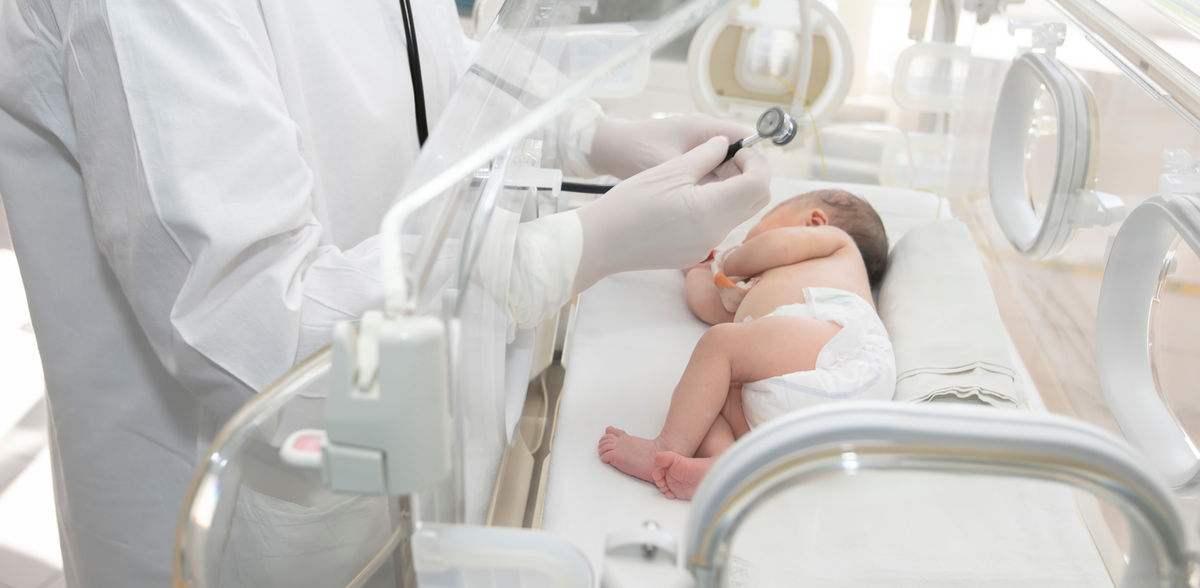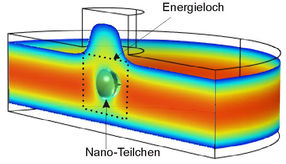New research findings on life-threatening disease of the baby's lungs
Scientists at Leipzig University Medicine investigate inflammatory processes in the development of disease
Advertisement
Congenital diaphragmatic hernia is a dangerous malformation of the lungs and diaphragm in which almost a third of affected babies die due to underdevelopment of the lungs. Medical scientists in Leipzig have made important progress in researching this disease. The team led by Dr. Richard Wagner from Leipzig University Medicine discovered that the dangerous malformation of the newborn's lungs is associated with inflammatory processes in connection with the increased occurrence of immune cells. In a further study, the researchers, together with colleagues from Canada, proved that components from amniotic fluid stem cells can have an anti-inflammatory effect.
Around one in 2,500 children is born with a diaphragmatic hernia. This condition causes a hole in the diaphragm of the fetus and, due to unexplained processes, prevents the lungs from fully developing before birth. Almost a third of affected babies die as a result. "We have known that congenital lung underdevelopment in diaphragmatic hernia is linked to inflammatory processes at the molecular level since we compared the molecular properties of stem cells from normal and underdeveloped lungs of affected patients," explains PD Dr. Richard Wagner, assistant physician and research group leader for pediatric surgery at Leipzig University Medicine. "In the study, we were able to show that lung maturation can be significantly improved by drug therapy with dexamethasone," says the pediatric surgeon. This steroid is already used in everyday clinical practice in pregnant women when a premature birth is imminent. It ensures that the fetus's lungs develop as well as possible in good time.
Immune cells in the underdeveloped lungs
"In a further study, we have now been able to establish that it is primarily the epithelial cells of the lungs that are affected by inflammation," says the scientist. "These are the cells that are located on the surface layer of the lungs and come into contact with the amniotic fluid." The inflammation could explain why lung development stalls. "If an organ has to struggle with an inflammatory reaction during development, organ differentiation and growth are impaired," says Wagner. In animal models and in human lungs of patients, the researchers found specific pro-inflammatory signaling processes that correlate with an accumulation of so-called macrophages, i.e. scavenger cells of the immune system. It is not yet known why these cells migrate more frequently into the child's lungs and possibly trigger the inflammation.
Cell components from amniotic fluid have an anti-inflammatory effect
Scientists in Toronto, with whom the Leipzig researchers are collaborating, are approaching the topic from a slightly different therapeutic direction. In a recently published study, they also found inflammatory processes and increased immune cells in the animal model for congenital diaphragmatic hernia. So-called extracellular vesicles from stem cells, which the researchers isolated from the amniotic fluid and multiplied, proved to be effective against the inflammatory changes. These vesicles are cell components that migrate from cell to cell and transport complex information - including genetic blueprints, such as "RNA particles". In the animal model, the researchers found that when they administered such vesicles to expectant mother animals, the inflammation decreased and the lungs of the fetuses were able to develop more normally again. However, a possible therapy with this method for humans is still a long way off: "For this, it still needs to be comprehensively tested how exactly the vesicles affect other organ systems of the foetus, for example," says Wagner.
Note: This article has been translated using a computer system without human intervention. LUMITOS offers these automatic translations to present a wider range of current news. Since this article has been translated with automatic translation, it is possible that it contains errors in vocabulary, syntax or grammar. The original article in German can be found here.
Original publication
Lina Antounians, Rebeca Lopes Figueira, Bharti Kukreja, Michael L. Litvack, Elke Zani-Ruttenstock, Kasra Khalaj, Louise Montalva, Fabian Doktor, Mikal Obed, Matisse Blundell, Taiyi Wu, Cadia Chan, Richard Wagner, Martin Lacher, Michael D. Wilson, Martin Post, Brian T. Kalish, Augusto Zani; "Fetal hypoplastic lungs have multilineage inflammation that is reversed by amniotic fluid stem cell extracellular vesicle treatment"; Science Advances, Volume 10
Florentine Dylong, Jan Riedel, Gaurang M. Amonkar, Nicole Peukert, Paula Lieckfeldt, Katinka Sturm, Benedikt Höxter, Wai Hei Tse, Yuichiro Miyake, Maria Moormann, Lena Marie Bode, Steffi Mayer, Richard Keijzer, Martin Lacher, Xingbin Ai, Jan-Hendrik Gosemann, Richard Wagner; "Overactivated Epithelial NF-κB Disrupts Lung Development in Congenital Diaphragmatic Hernia"; American Journal of Respiratory Cell and Molecular Biology, Volume 69






























































